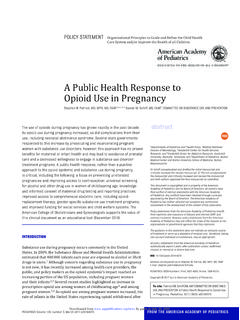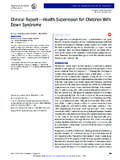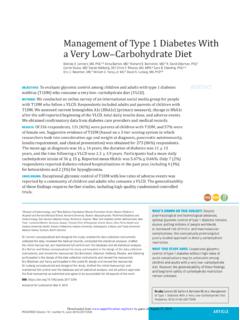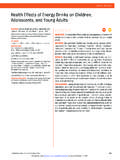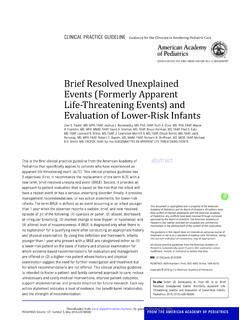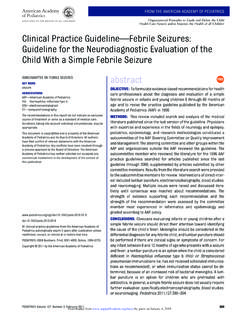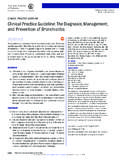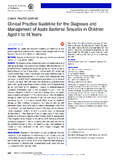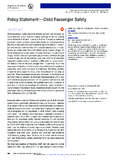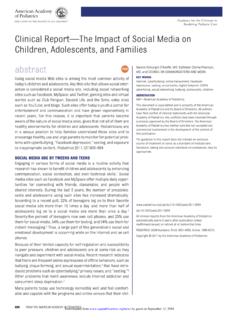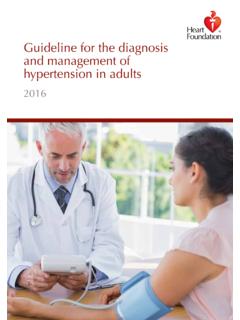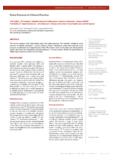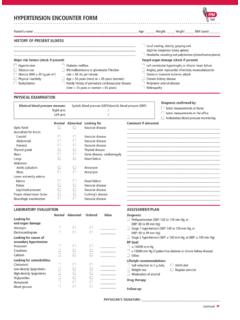Transcription of Clinical Practice Guideline for Screening and Management ...
1 Clinical Practice Guideline for Screening and Management of High blood pressure in Children and AdolescentsJoseph T. Flynn, MD, MS, FAAP, a David C. Kaelber, MD, PhD, MPH, FAAP, FACP, FACMI, b Carissa M. Baker-Smith, MD, MS, MPH, FAAP, FAHA, c Douglas Blowey, MD, d Aaron E. Carroll, MD, MS, FAAP, e Stephen R. Daniels, MD, PhD, FAAP, f Sarah D. de Ferranti, MD, MPH, FAAP, g Janis M. Dionne, MD, FRCPC, h Bonita Falkner, MD, i Susan K. Flinn, MA, j Samuel S. Gidding, MD, k Celeste Goodwin, l Michael G. Leu, MD, MS, MHS, FAAP, m Makia E. Powers, MD, MPH, FAAP, n Corinna Rea, MD, MPH, F A A P, o Joshua Samuels, MD, MPH, FAAP, p Madeline Simasek, MD, MSCP, FAAP, q Vidhu V. Thaker, MD, FAAP, r Elaine M. Urbina, MD, MS, FAAP, s SUBCOMMITTEE ON Screening AND Management OF HIGH blood pressure IN CHILDRENT hese pediatric hypertension guidelines are an update to the 2004 Fourth Report on the Diagnosis, Evaluation, and Treatment of High blood pressure in Children and Adolescents.
2 Significant changes in these guidelines include (1) the replacement of the term prehypertension with the term elevated blood pressure , (2) new normative pediatric blood pressure (BP) tables based on normal-weight children, (3) a simplified Screening table for identifying BPs needing further evaluation, (4) a simplified BP classification in adolescents 13 years of age that aligns with the forthcoming American Heart Association and American College of Cardiology adult BP guidelines, (5) a more limited recommendation to perform Screening BP measurements only at preventive care visits, (6) streamlined recommendations on the initial evaluation and Management of abnormal BPs, (7) an expanded role for ambulatory BP monitoring in the diagnosis and Management of pediatric hypertension, and (8) revised recommendations on when to perform echocardiography in the evaluation of newly diagnosed hypertensive pediatric patients (generally only before medication initiation), along with a revised definition of left ventricular hypertrophy.
3 These guidelines include 30 Key Action Statements and 27 additional recommendations derived from a comprehensive review of almost 15 000 published articles between January 2004 and July 2016. Each Key Action Statement includes level of evidence, benefit-harm relationship, and strength of recommendation. This Clinical Practice Guideline , endorsed by the American Heart Association, is intended to foster a patient- and family-centered approach to care, reduce unnecessary and costly medical interventions, improve patient diagnoses and outcomes, support implementation, and provide direction for future cite: Flynn JT, Kaelber DC, Baker-Smith CM, et al. Clinical Practice Guideline for Screening and Management of High blood pressure in Children and Adolescents. Pediatrics. 2017;140(3):e20171904aDr. Robert O. Hickman Endowed Chair in Pediatric Nephrology, Division of Nephrology, Department of Pediatrics, University of Washington and Seattle Children's Hospital, Seattle, Washington; bDepartments of Pediatrics, Internal Medicine, Population and Quantitative Health Sciences, Center for Clinical Informatics Research and Education, Case Western Reserve University and MetroHealth System, Cleveland, Ohio; cDivision of Pediatric Cardiology, School of Medicine, University of Maryland, Baltimore, Maryland; dChildren s Mercy Hospital, University of Missouri-Kansas City and Children s Mercy Integrated Care Solutions, Kansas City, Missouri; eDepartment of Pediatrics, School of Medicine, Indiana University, Bloomington, Indiana.
4 FDepartment of Pediatrics, School of Medicine, University of Colorado-Denver and Pediatrician in Chief, Children s Hospital Colorado, Aurora, Colorado; gDirector, Preventive Cardiology Clinic, Boston Children's Hospital, Department of Pediatrics, Harvard Medical School, Boston, Massachusetts; hDivision of Nephrology, Department of Pediatrics, University of British Columbia and British Columbia Children s Hospital, Vancouver, British Columbia, Canada; Departments of iMedicine and Pediatrics, Sidney Kimmel Medical College, Thomas Jefferson University, Philadelphia, Pennsylvania; jConsultant, American Academy of Pediatrics, Washington, District of Columbia; kCardiology Division Head, Nemours Cardiac Center, Alfred I. duPont Hospital for Children, Wilmington, Delaware; lNational Pediatric blood pressure Awareness Foundation, Prairieville, Louisiana; Departments of mPediatrics and Biomedical Informatics and Medical Education, University of Washington, University of Washington Medicine and Information Technology Services, and Seattle Children's Hospital, Flynn et alClinical Practice Guideline for Screening and Management of High blood pressure in Children and Adolescents2017 GALLEY PROOFS eptember 2017140 PEDIATRICS Volume 140, number 3, September 2017:e20171904 From the AmericAn AcAdemy oF PediAtricsGuidance for the Clinician in Rendering Pediatric CareCLINICAL Practice Guideline by guest on January 27, from 1.
5 InTroducTIon1. Scope of the Clinical Practice GuidelineInterest in childhood hypertension (HTN) has increased since the 2004 publication of the Fourth Report on the Diagnosis, Evaluation, and Treatment of High blood pressure in Children and Adolescents (Fourth Report).1 Recognizing ongoing evidence gaps and the need for an updated, thorough review of the relevant literature, the American Academy of Pediatrics (AAP) and its Council on Quality Improvement and Patient Safety developed this Practice Guideline to provide an update on topics relevant to the diagnosis, evaluation, and Management of pediatric HTN. It is primarily directed at clinicians caring for children and adolescents in the outpatient setting. This Guideline is endorsed by the American Heart it was not possible to identify sufficient evidence, recommendations are based on the consensus opinion of the expert members of the Screening and Management of High blood pressure in Children Clinical Practice Guideline Subcommittee (henceforth, the subcommittee ).
6 The subcommittee intends to regularly update this Guideline as new evidence becomes available. Implementation tools for this Guideline are available on the AAP Web site (https:// www. aap. org/ en- us/ about- the- aap/ Committees- Councils- Sections/ coqips/ Pages/ Implementation- Guide. aspx). MethodologyThe subcommittee was co-chaired by a pediatric nephrologist and a general pediatrician and consisted of 17 members, including a parent representative. All subcommittee members were asked to disclose relevant financial or proprietary conflicts of interest for members or their family members at the start of and throughout the Guideline preparation process. Potential conflicts of interest were addressed and resolved by the AAP. A detailed list of subcommittee members and affiliations can be found in the Consortium section at the end of this article. A listing of subcommittee members with conflicts of interest will be included in the forthcoming technical subcommittee epidemiologist created a detailed content outline, which was reviewed and approved by the subcommittee.
7 The outline contained a list of primary and secondary topics generated to guide a thorough literature search and meet the goal of providing an up-to-date systemic review of the literature pertaining to the diagnosis, Management , and treatment of pediatric HTN as well as the prevalence of pediatric HTN and its associated the topics covered in the outline, 80% were researched by using a Patient, Intervention/Indicator, Comparison, Outcome, and Time (PICOT) format to address the following key questions:1. How should systemic HTN (eg, primary HTN, renovascular HTN, white coat hypertension [WCH], and masked hypertension [MH]) in children be diagnosed, and what is the optimal approach to diagnosing HTN in children and adolescents?2. What is the recommended workup for pediatric HTN? How do we best identify the underlying etiologies of secondary HTN in children?3.
8 What is the optimal goal systolic blood pressure (SBP) and/or diastolic blood pressure (DBP) for children and adolescents?4. In children 0 to 18 years of age, how does treatment with lifestyle versus antihypertensive agents influence indirect measures of cardiovascular disease (CVD) risk, such as carotid intimamedia thickness (cIMT), flow-mediated dilation (FMD), left ventricular hypertrophy (LVH), and other markers of vascular dysfunction?To address these key questions, a systematic search and review of literature was performed. The initial search included articles published between the publication of the Fourth Report (January 2004) and August 2015. The process used to conduct the systematic review was consistent with the recommendations of the Institute of Medicine for systematic the topics not researched by using the PICOT format, separate searches were conducted.
9 Not all topics (eg, economic aspects of pediatric HTN) were appropriate for the PICOT format. A third and final search was conducted at the time the Key Action Statements (KASs) were generated to identify any additional relevant articles published between August 2015 and July 2016. (See Table 1 for a complete list of KASs.)A detailed description of the methodology used to conduct the literature search and systematic review for this Clinical Practice Guideline will be included in the forthcoming technical report. In brief, reference selection involved a multistep process. First, 2 subcommittee members reviewed the titles and abstracts of references identified for each key question. The epidemiologist provided a deciding vote when required. Next, 2 subcommittee members and the epidemiologist conducted full-text reviews of the selected articles. Although many subcommittee members have extensively published articles on topics covered in this Guideline , articles were not preferentially selected on the basis of selected at this stage were mapped back to the relevant main topic in the outline.
10 Subcommittee members were then assigned to FROM THE AMERICAN ACADEMY OF PEDIATRICS2 Flynn et alClinical Practice Guideline for Screening and Management of High blood pressure in Children and Adolescents2017 GALLEY PROOFS eptember 2017140 by guest on January 27, from PEDIATRICS Volume 140, number 3, September 20173 Flynn et alClinical Practice Guideline for Screening and Management of High blood pressure in Children and Adolescents2017 GALLEY PROOFS eptember 2017140 TABLE 1 Summary of KASs for Screening and Management of High BP in Children and AdolescentsKASE vidence Quality, Strength of Recommendation1. BP should be measured annually in children and adolescents 3 y of , moderate2. BP should be checked in all children and adolescents 3 y of age at every health care encounter if they have obesity, are taking medications known to increase BP, have renal disease, a history of aortic arch obstruction or coarctation, or , moderate3.
